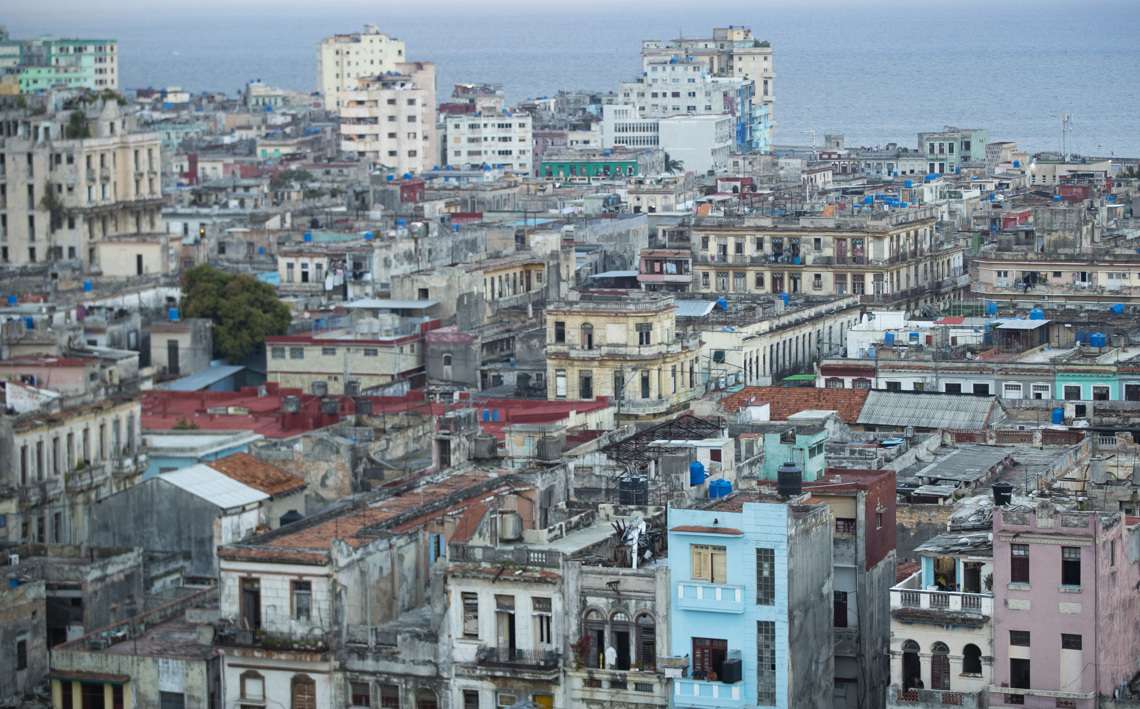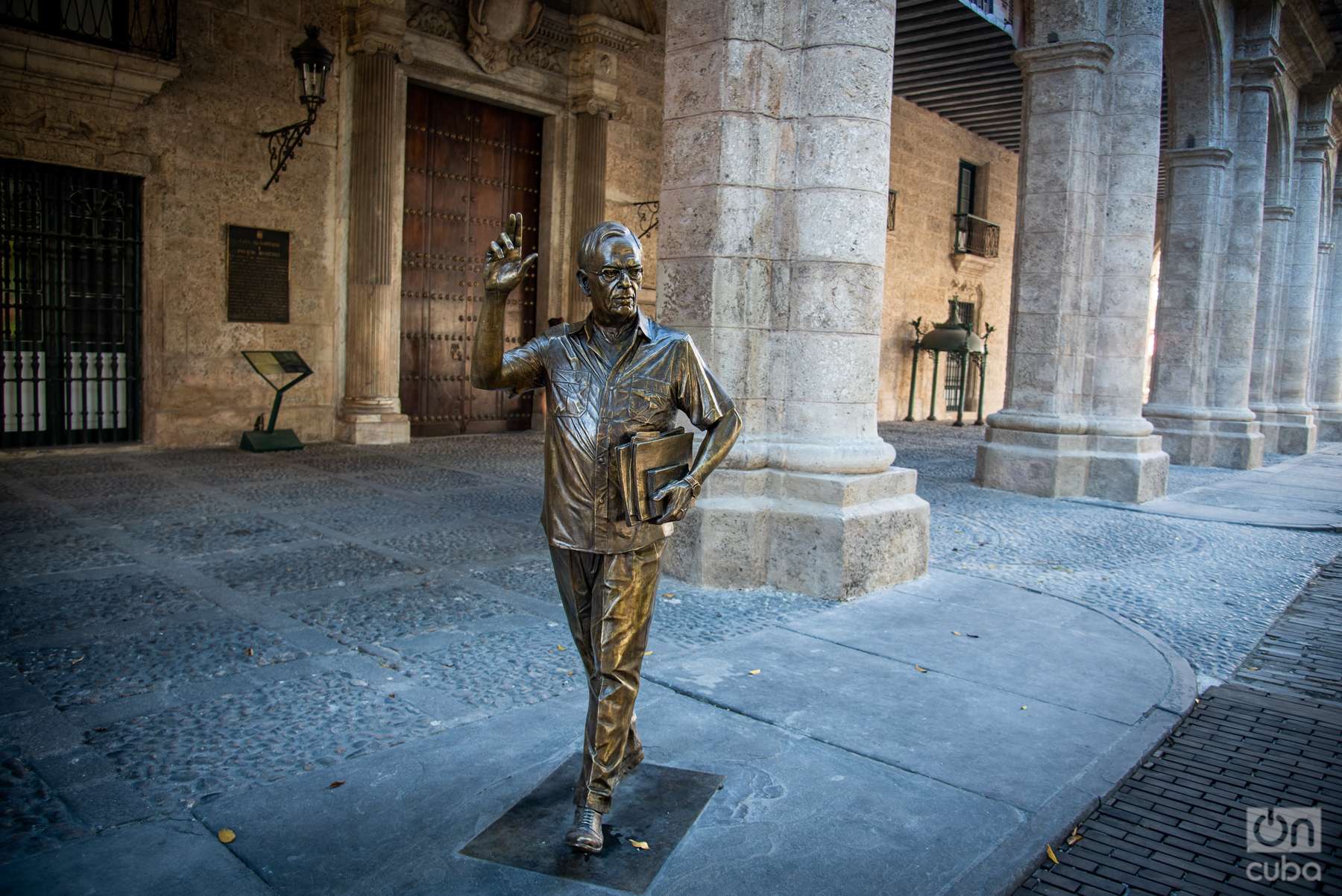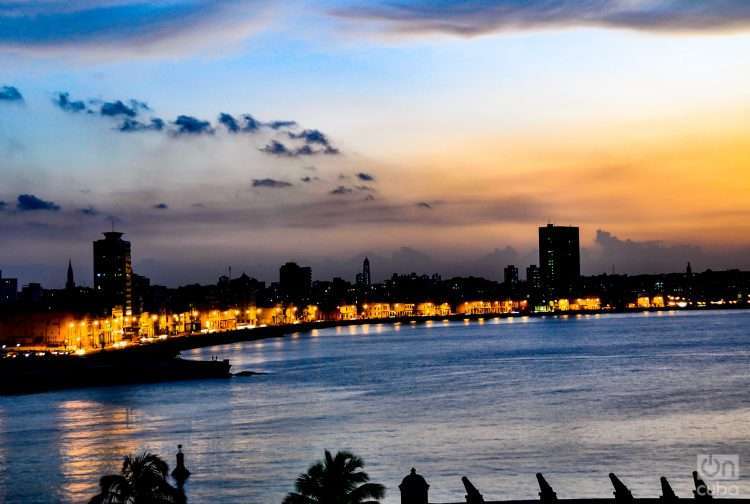We still owe ourselves — citizens, entrepreneurs, technicians and governments — innumerable debates about what must be done to recover the city and channel its future.
There is currently no clear and public definition of what the housing policy should be (location, typology, financing, etc.), nor on urban mobility, nor public spaces and green areas, nor local services (education, health, commerce…). Nor is there any on environmental protection (solid and liquid waste treatment, noise pollution, air pollution…), or on the recovery of road, hydraulic, electrical, and communication infrastructures.
These issues and many more, such as demographic and employment policy, the urban economy, the role of tourism in the city, the prospects for the use of key areas such as the Bay of Havana, Ciudad Libertad, Habana del Este and others require studies, ideas, debates and decisions agreed upon and articulated in an urban strategy.
Hopefully it won’t take long to open the debate and update ideas. And it is good to remember that proposals are not lacking; just to give an example, if all the projects prepared by Architecture and Urbanism students were mapped on parts of the city — neighborhoods, avenues, public spaces — a good part of the urbanized area would be practically covered.
But the times when progress has been made on these issues and clear objectives have begun to be defined, another question has been opened as complex as the first, and that is to determine not what to do, but how to achieve it. It is worth exploring the matter in some detail.

The urgent and the important
It is clear that the city government and its administrative structures must play a major role in the process. However, and for reasons that deserve in-depth study, it has repeatedly been confirmed that the difficulties that these institutions present in assuming such responsibilities are great.
Most of the time they are absorbed — I would say almost abducted — by big and small daily problems that make the urgent prevent them from dealing with the important.
Making the city function day by day with extremely limited resources — financial, material and human —, in a context of strong centralism and with bureaucratic administrative habits of order and command, makes it difficult to have a broad, innovative and far-reaching view.
This makes two equally necessary activities to be increasingly separated from each other: planning and management (in a certain way “the what” and “the how”). Those who dedicate themselves to one thing fail to occupy themselves with the other.
A plan without management is useless if it fails to be implemented. In the same way, management without a plan is blind if it does not know where it is going. A plan that is not accepted, defended and used by the city government is an orphan plan. A government that does not guide its actions through a plan will hardly be able to define and achieve the desired objectives, by always acting reactively.
It seems evident that a government team requires, in order to fulfill its mission, three essential elements: firstly, vesting adequate powers, clearly established in legislation for decentralized local administration. If the higher levels interfere in the decisions of the city, governing becomes very difficult.
Secondly, resources consistent with the challenges to be faced. In particular, fiscal instruments that allow it to form an adequate investment budget for the city.
Third, technical planning and management capacity that allows it to formulate a specific plan and budget for the urban area without neglecting or interfering in its daily operation. Havana is still far from all of this.
However, the capital has comparative advantages that can facilitate proper planning and management. On the one hand, most of the urban land is publicly owned, which facilitates decision-making and the allocation of uses, something that many cities in the world would envy.
On the other hand, there is a metropolitan administration that makes it possible to easily articulate the administrative and political structures, something that has not been achieved by various metropolises that have been constituted by aggregation of pre-existing nuclei.
Another positive element available to the city is the fruitful experience of the Office of the Historian in the historic center, which shows in practice the path towards sustainable development.
I consider it interesting to indicate some guidelines to follow in order to ensure that the plans that are agreed upon and approved can be implemented through proper management. It seems opportune to advance in four essential aspects:
- Achieving the formulation of an operational plan
- Strengthening the local budget
- Modernizing public administration
- Regulating land management

Formulating an operational plan
It is not the first time that the city of Havana presents an urban plan for approval and obtains it. However, it is not the first time that this plan has been “shelved,” it has been forgotten and its real impact on decision-making is minimal.
This is not something strange if its many shortcomings are examined. These are usually incomplete plans that suffer from a lack of specification in at least two essential elements: an action program agreed with the executing agencies and a budget that quantifies the necessary financial and material investment.
They often propose ideas that are insufficiently articulated with the sectoral investment process of state entities and even less with private action (private housing, MSMEs, etc.). The plan proposes, but the ministries dispose.
On the other hand, the process of prior disclosure of the plan in order to make real participation possible is always insufficient: studies and proposals are usually circulated among the agencies, but they are not communicated sufficiently publicly, so most of the population ignores it. How to demand that the population comply with regulations that are unknown or not understood?
It is essential, at the same time, to strengthen the urban scale ― beyond the general zoning and the layout of large infrastructures ― specifying the urban regulations, the indicative morphology of urban areas and even the general guidelines for the architecture of buildings so that it does not remain in too general abstractions.
Lastly, it would be opportune to simplify, order, and specify the complex institutional structure that a plan must address in order to be executed where national, provincial, and local entities intervene — and often interfere — as well as multiple sectors of economic and social activity. As long as this is not achieved, the plans will remain condemned to be mere academic documents.

Strengthening the local budget
The importance of having sufficient resources to face the transformations and investments proposed by the plan is unquestionable. The limitations of the city government at present are undeniable, but there are many ways that could allow an increase in them.
In the first place, it would be advisable to carry out a determined tax reform that makes it possible to create financial funds to swell the budget of the capital: all the cities of the world present a very diverse arsenal of rates, contributions and instruments for the recovery of urban capital gains that are going to local coffers and allow them to swell their financial capacity. A property tax of 1%, for example, seems meager. It is impossible not to wonder, where does the remaining 99% go? Will it be used efficiently? Couldn’t that contribution to the city be increased somewhat? To this can be added credits, donations and transfers from other areas of the administration.
Secondly, public/private partnerships are also widely practiced throughout the world. Bidding and contracting of concessions for various public services is frequent, with the essential controls, which relieves the urban administration of responsibilities and usually improves the quality of services. The existence of several thousand SMEs opens up interesting possibilities in this direction.
Other actors should be articulated in an urban plan, such as the growing local development projects, which can also make an important contribution to the quality of urban life, as well as being integrated into local productive chains. As long as the city cannot decide on its income and its expenses, it will be very difficult for it to comply with what is established in the plans.

Modernizing public administration
It is increasingly urgent to overturn the functioning of the administration and its relationship with citizens. This concerns multiple aspects. The political-administrative division of the city itself ― which may seem like a boring bureaucratic issue ― hides decisions that strongly influence the functioning of relations between the administration and citizens.
It is not the same to live in a small or large municipality; having processing offices near or far; electing a constituency delegate than a mayor. An inhabitant of Regla does not have to walk the same kilometers as one from Habana del Este or Guanabacoa for an administrative paperwork.
It is not the same, therefore, to organize in 15 municipalities, in five or in 70 districts. It is also necessary to clearly delimit the attributions and powers of the provincial and municipal levels, especially in a city that eliminated its elected assembly at the provincial level, with which accountability now dominates “upwards,” not downwards.
Modernizing the public administration means making it more transparent and accessible to citizens so that they perceive that it is at their service and not the citizen at the service of the official on duty.
A broad administration modernization program should be formulated to regulate the right of access to public information such as land registry data, plans, programs and budgets, local statistics, etc. Said program should also include the computerization of records and administrative procedures, but above all, in the first place, a training program and in a certain way of “re-education” of all officials to convert it into a “friendly” administration and not enemy of citizens.
This should include the dignification (also salary) of these jobs, the appearance of the premises, as well as an essential computerization of the processes that facilitates the procedures, not only for individuals but also for the growing private legal entities, in order to expedite the economic life of the city.

Regulating land management
Another no less important aspect is the transfer of powers over urban land to the city government, as part of the heritage that it must administer. It is essential for the good administration of the city, as well as to be able to implement many of the proposals of the urban plans for the real estate fund (both land and buildings) is managed by its government.
There are several directions in which it is necessary to move forward. It is essential to complete the urban land registry and complete the registration in the property registry of all properties, state and private. This will help create the essential tax base and will allow control of the proper use of the real estate fund.
Currently there are numerous urban lots and buildings little or badly used, in the hands of state entities. Whether through administrative or tax means ― a tax on idle use ―, it is necessary to recover this enormous potential for the development of the city.
In parallel, it will be necessary to simplify and update the real estate valuation ― today there are the cadastral value, the reference value, the registration value and the market value ― obsolete due to inflationary processes. (The National Institute for Territorial and Urban Planning (INOTU) has just issued Resolution 173 in which the “methodology to determine the cadastral value of real estate of an urban nature” is specified. In it, it sets three values: the real (accounting registered), the market and the cadastral.)
It will be necessary to evaluate the convenience and opportunity of valuing that land through the sale of its rights of use at a fixed term, as a guarantee for loans or in one of the many existing modalities. It is an immobilized fund that must be used for urban development.
Such are some of the programs that a dynamic city should undertake in order to carry out the transformation ideas expressed in the plans.
I do not intend to exhaust the subject at all since essential issues remain pending, such as the governance scheme of the city itself (which, for example, has lost its assembly of representatives). These are, without a doubt, controversial issues that will have to be discussed.
Such is the scarcity ― not only of resources, but of ideas in this regard ―, the prevailing lethargy and immobility that a program for change already seems like an unrealizable or dangerous utopia. We must define the future we want for the city, but we must also specify how to get there.
A dynamic government is essential, with operational autonomy, capable of enthusing the population around a “city project,” but also willing to render accounts of its actions in a transparent manner before the citizens.











It seems to me that more trade and co-operation with China would help.